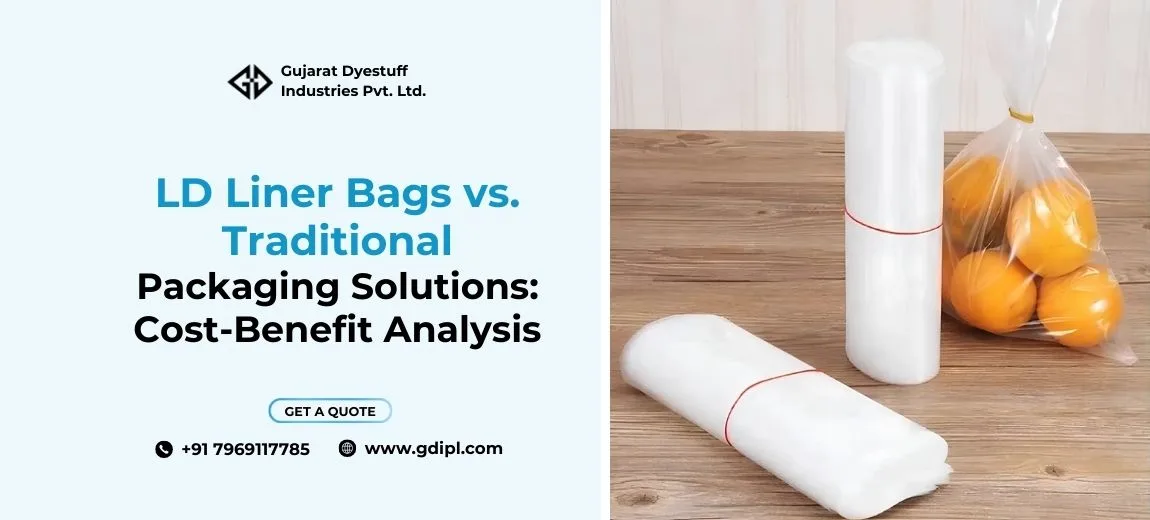LD Liner Bags vs. Traditional Packaging Solutions: Cost-Benefit Analysis
Views : 394

In today's fast-paced world, businesses are constantly looking for ways to improve efficiency while reducing costs. Packaging, an often overlooked aspect of the supply chain, is one area where small changes can make a big difference. Among the options available, Low-Density (LD) liner bags have emerged as a highly effective solution. In this article, we will conduct a comprehensive cost-benefit analysis of LD liner bags versus traditional packaging solutions to help businesses make informed decisions.
Introduction: The Growing Demand for Efficient Packaging Solutions
Packaging plays a crucial role in protecting products, facilitating transportation, and ensuring customer satisfaction. As industries strive to meet growing demands for sustainability, cost efficiency, and reliability, packaging materials are evolving. One packaging solution gaining significant traction is LD liner bags. These bags are made from low-density polyethylene, offering superior flexibility and strength compared to traditional alternatives like cardboard or high-density polyethylene (HDPE) bags.
As a liner bags manufacturer, our goal is to provide businesses with packaging solutions that not only meet industry standards but also offer cost-effective, eco-friendly alternatives. This article will delve into the various aspects of LD liner bags and compare them to traditional packaging solutions, offering valuable insights into their advantages and potential drawbacks.
Understanding LD Liner Bags
LD liner bags are made from low-density polyethylene, a material that is flexible, durable, and capable of handling various loads. They are widely used for waste management, product packaging, and industrial purposes. These bags are often available in different sizes, thicknesses, and colors, allowing for customization to suit specific needs.
Some key advantages of LD liner bags include:
- High Flexibility: They are adaptable to different shapes and sizes, providing a secure fit for various products.
- Cost-Effectiveness: LD liner bags are generally cheaper than rigid packaging materials like boxes and containers.
- Eco-Friendly: LD polyethylene is recyclable, contributing to a more sustainable environment
- Strength: Despite their lightweight nature, these bags are incredibly durable and resistant to tearing, even under heavy loads.
Traditional Packaging Solutions
Traditional packaging solutions include materials like cardboard boxes, wooden crates, glass containers, and HDPE bags. Each of these materials has its own set of benefits, but they also come with significant drawbacks in terms of cost, space efficiency, and environmental impact. For instance, cardboard is often used for product packaging due to its availability and ability to be recycled. However, cardboard can be prone to moisture damage, reducing its durability.
Cost Comparison: LD Liner Bags vs. Traditional Packaging
When evaluating the cost-effectiveness of LD liner bags versus traditional packaging, several factors come into play: material cost, storage space, transportation efficiency, and environmental impact.
- Material Cost: One of the most significant advantages of LD liner bags over traditional packaging is their lower material cost. LD polyethylene is less expensive than materials such as HDPE or cardboard. For instance, while a box may cost anywhere from $1 to $3 each depending on size and material, an LD liner bag can cost as little as $0.10 to $0.50 per unit, making it a more affordable option for companies that need large quantities of packaging.
- Storage Space Efficiency: Another advantage of LD liner bags is their space efficiency. Unlike bulky cardboard boxes or wooden crates, LD liners are flexible and can be compressed, saving significant storage space. This can be a major advantage for businesses that need to store large amounts of packaging materials in a limited space.
- Transportation Cost: LD liner bags are lightweight and compact, which significantly reduces transportation costs. The flexibility and small packaging volume of LD liners allow businesses to ship more units in a single shipment, reducing the overall cost per unit during transport. On the other hand, traditional packaging materials such as cardboard or wooden crates are bulkier, which increases shipping costs.
- Environmental Impact: In today's market, sustainability is a key consideration. LD liner bags have the upper hand here as well. LD polyethylene is recyclable and has a lower carbon footprint compared to cardboard or HDPE bags. Additionally, the ability to store and transport more products in fewer shipments results in a reduction in fuel consumption and overall environmental impact.
Durability Factor
LD liner bags are highly durable, making them an excellent choice for transporting products without the risk of tearing. Compared to traditional packaging like cardboard boxes, LD liners provide a more reliable option in various environmental conditions, especially when dealing with moisture or harsh weather conditions. Traditional packaging, like cardboard, can weaken under these conditions, leading to damaged products during transit.
Conclusion: Choosing the Right Packaging Solution
In conclusion, the choice between LD liner bags and traditional packaging solutions largely depends on the specific needs of your business. For companies seeking a cost-effective, eco-friendly, and flexible packaging solution, LD liner bags offer clear advantages. They provide lower material costs, better storage and transportation efficiency, and a reduced environmental impact. However, businesses that prioritize aesthetics or need extra protection for delicate products may find traditional packaging solutions more suitable.
If you're considering switching to LD liner bags, it's essential to work with a reliable LD bag manufacturer who can offer high-quality, customizable products that meet your specific needs. Gujarat Dyestuff Industries Pvt. Ltd. is a trusted name in the industry, known for providing top-notch packaging solutions to businesses across various sectors.
Looking for reliable and certified packaging solutions? Get in touch with Gujarat Dyestuff Industries Pvt. Ltd. for a customized quote today!

